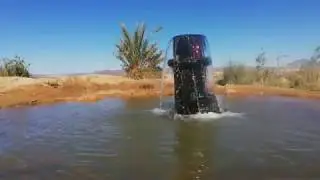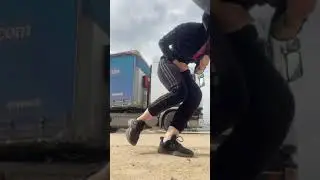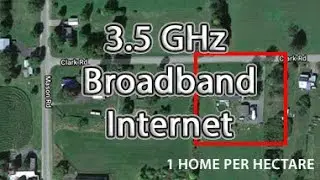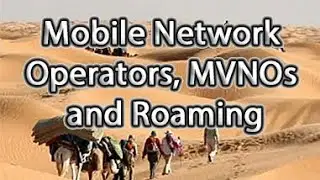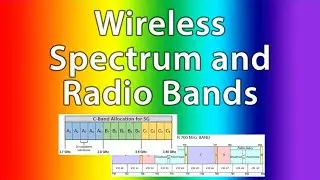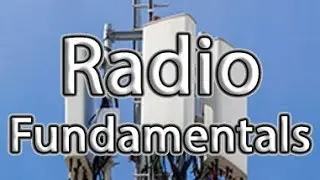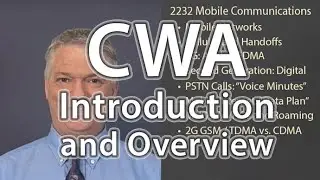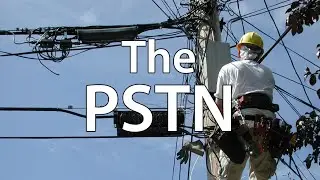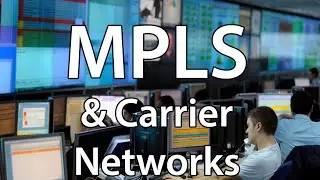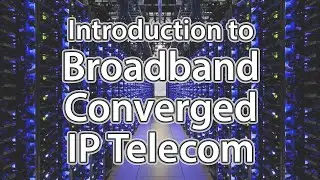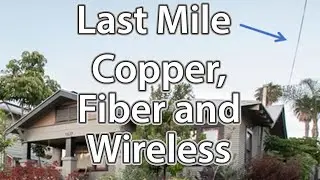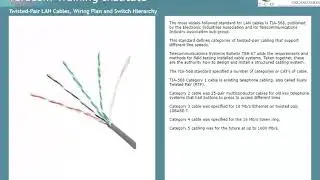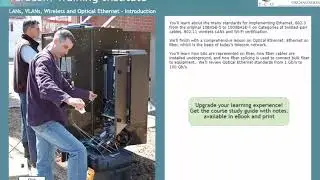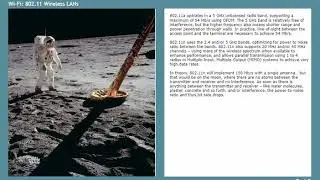Twisted-Pair LAN Cables, Wiring Plan and Switch Hierarchy - Course 2211 Lesson 6
Watch in full quality: https://www.teracomtraining.com/onlin...
Course 2211 LANs, VLANs, Wireless and Optical Ethernet, Lesson 6 (full)
MAC Addresses • MAC Frames • Layer 2 Switches • VLANs • Ethernet on Copper • 1000BASE-T • Power over Ethernet • Cable Categories • Office Wiring Plan • Wireless Ethernet (Wi-Fi) • Optical Ethernet • Ethernet in the Core, MANs and PONs • Fiber Types • SFP Transceivers • Field Installation
This course is all about Ethernet: the fundamentals, equipment and implementations including twisted-pair copper cables, wireless and fiber, in-building, in the network core, MANs and PONs.
You'll understand the jargon and buzzwords, the underlying ideas, and how it all works together to form the physical basis of the network that used to be called the Public Switched Telephone Network (PSTN), now being absorbed Pac-Man style by The Internet, becoming the IP Packet-Switched Telecommunications Network (IP‑PSTN).
… in plain English.
1. Course Introduction
2. Broadcast Domains, MAC Addresses and MAC Frames
3. LAN Switches a.k.a. Layer 2 Switches
4. VLANs
5. 802 Physical Standards: 802.3 Twisted Pair and 802.11 Wi-Fi
6. Twisted-Pair LAN Cables, Wiring Plan and Switch Hierarchy
7. Optical Ethernet and Fiber Links
Ethernet implements the equivalent of pipe physically connecting two devices. IP and MPLS are used to move packets from one pipe to another. They are covered in other courses.
Ethernet and its MAC frames has fulfilled one of the Holy Grails of telecom, packaging everything the same way on all kind of links: copper wire, fiber and wireless - in the core of the network, in the access network, and in the customer premise. Standardizing on MAC frames across the board makes interworking simpler, more reliable and cheaper to implement. As a telecom engineer, I stand back in awe and admire.
We’ll begin with the fundamental idea of a broadcast domain, first implemented with a bus cable. We’ll understand LAN interfaces, and how each interface has a hard-coded MAC addresses, and how the address field in a MAC frame is used to indicate for whom a frame is intended, since all stations in a broadcast domain receive it. We’ll then understand how the bus is now inside a box called an Ethernet switch, LAN switch or Layer 2 switch, how the switch learns the MAC address of each station, and how the LAN switch forwards MAC frames to one or more stations. Then we’ll go over the important idea of VLANs, which are broadcast domains defined in software, and how VLANs can be used to segregate traffic by device type and by work area at the enterprise level, and segregate traffic by customer at the carrier level. You’ll learn about the many standards for implementing Ethernet, 802.3 from the original 10BASE-5 to 1000BASE-T on Categories of twisted-pair cables, 802.11 wireless LANs and Wi-Fi certification.
We’ll finish with a compressive lesson on Optical Ethernet: Ethernet on fiber, which is the basis of today’s telecom network. You’ll learn how bits are represented on fiber, how fiber cables are installed underground, and how fiber splicing is used to connect bulk fiber to equipment. We’ll review Optical Ethernet standards from 1 Gb/s to 100 Gb/s.
The objectives of this course are to understand:
The idea of a broadcast domain.
The idea of a MAC addresses to identify a LAN interface on a station in a broadcast domain.
What MAC frames are, and what purpose they serve.
What a LAN switch is, and what it does.
How VLANs can be used to segregate devices into different broadcast domains.
The IEEE 802 series of standards: The 802.3 standard and communicating MAC frames at 10 Mb/s on coaxial cables to Gigabit Ethernet on copper and fiber. What the code 1000BASE-T means.
MAC frames over the Ether, a.k.a. Wi-Fi, the 2.4 and 5 GHz unlicensed bands, and the fundamentals of how the bits in MAC frames are communicated using radio carrier frequencies.
Wiring Ethernet to the work area with Cat 5, Cat 5e and Cat 6 twisted-pair copper-wire cables. Wiring closets and Layer 2 aggregation switches.
What Optical Ethernet is, and how it is the building block of telecom networks, including Metropolitan Area Networks (MANs), carrier MPLS networks, and Passive Optical Networks (PONs) for fiber to the home.
The fundamentals of how the bits in MAC frames are communicated using light guided in glass tubes. How fiber cables are deployed and connected to equipment at each end. What designations like 100GBASE-ER4 mean.
For more information, and to watch this in full quality, please visit https://www.teracomtraining.com/onlin... Cheers!
